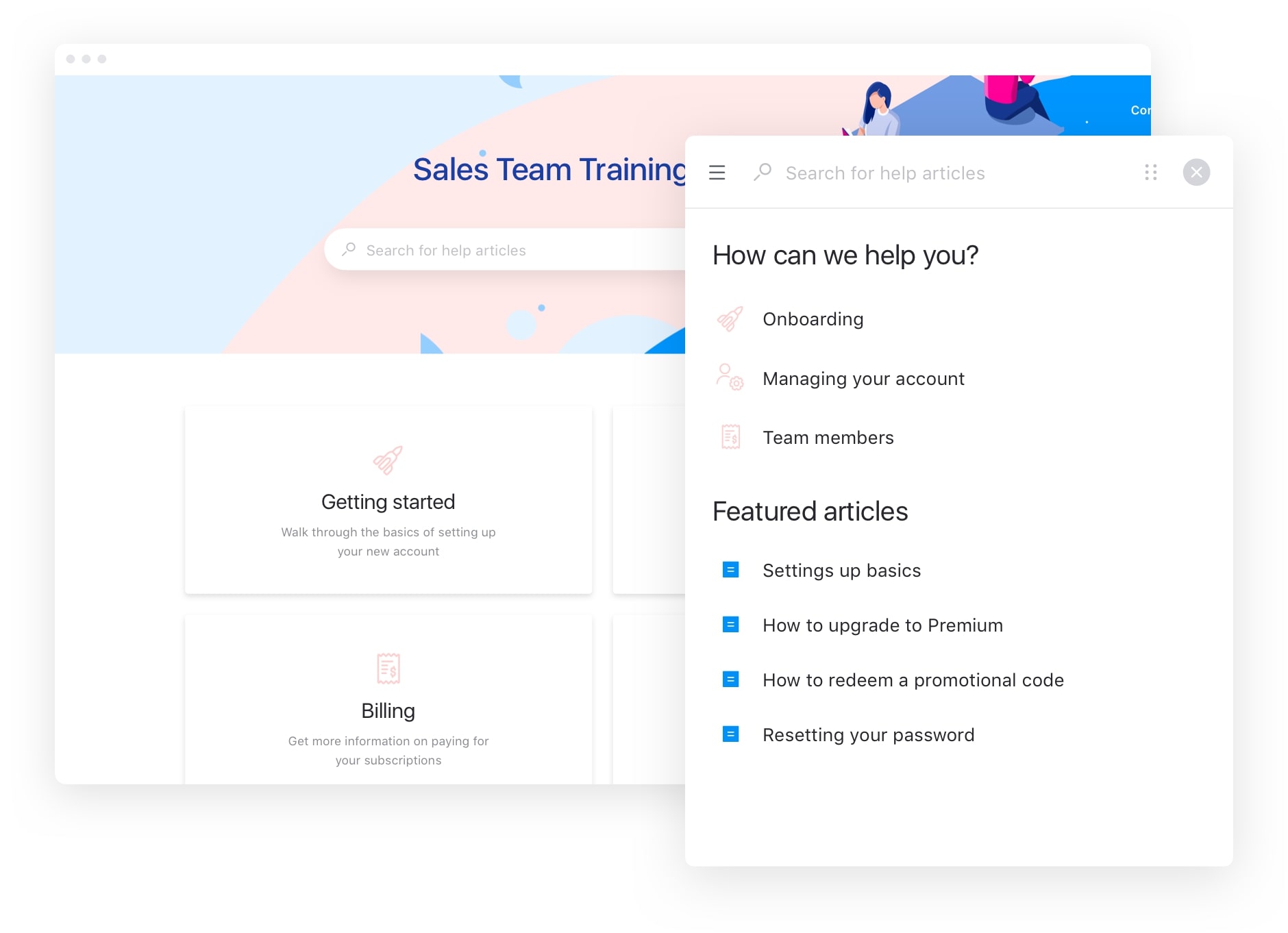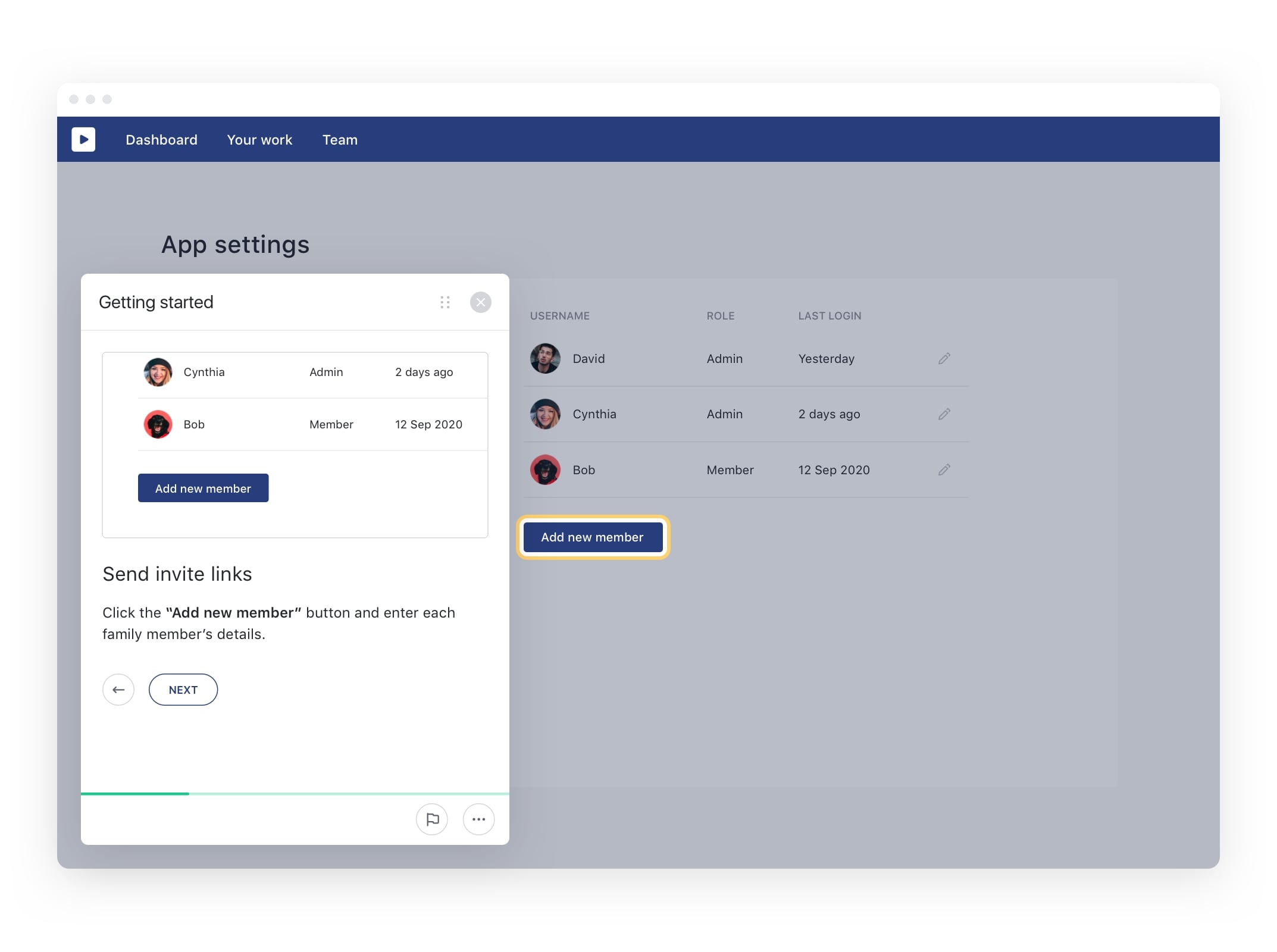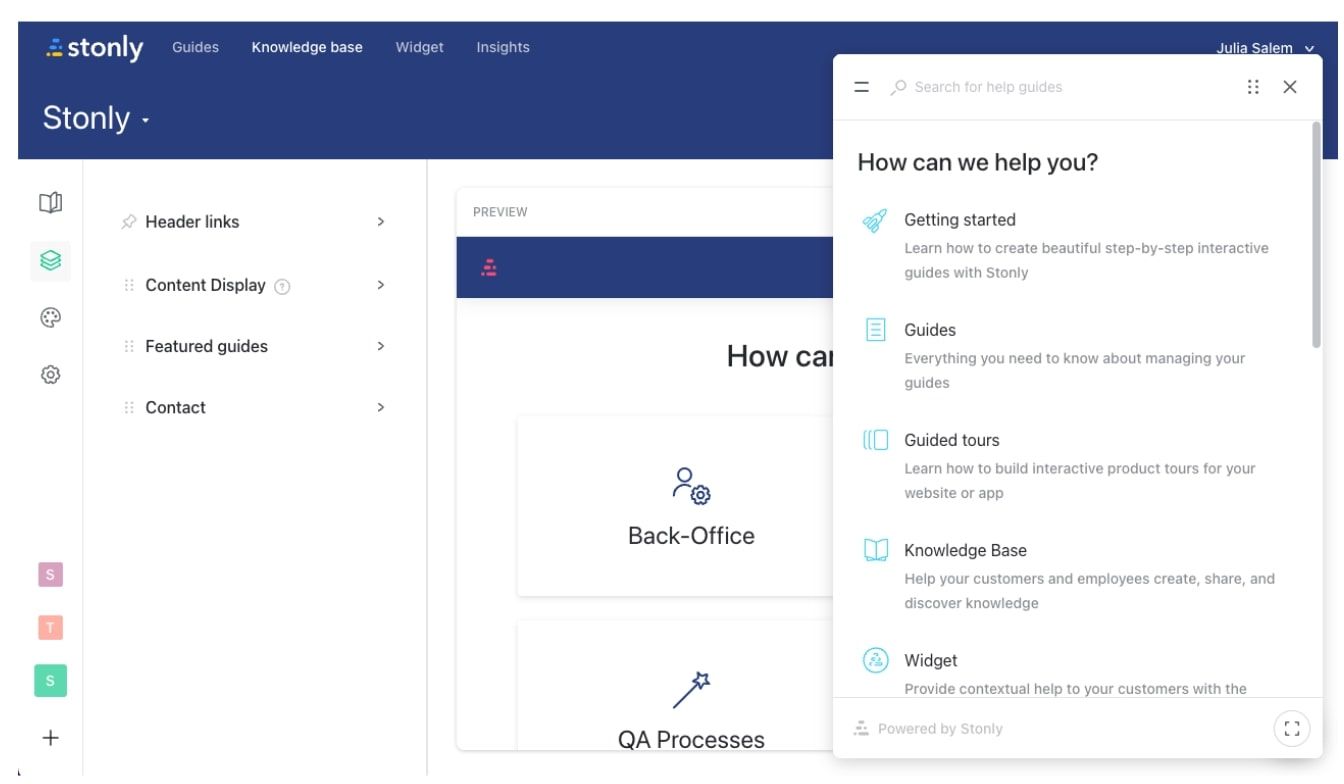Has your team ever run into trouble when an individual with tons of knowledge left your company? Or, do you struggle to find the information you need from subject matter experts (SMEs) when working on a project? You’re not alone.
Thankfully, there’s a simple solution: Implement an easy-to-use knowledge management tool and follow some best practices.
Implementing a collaborative knowledge management system will help an organization increase productivity, become more agile, and improve efficiency while avoiding common pitfalls that may arise when starting the process.
We’ll walk you through some of the most common knowledge management challenges and how to overcome them.
Ready to start improving your knowledge management system today?
Stonly’s no-code solutions make creating and maintaining a knowledge base easy and efficient.
Start a FREE trial
8 Challenges of knowledge management and how to overcome them
While there are many benefits of a knowledge base, it isn’t without drawbacks. However, you can overcome these challenges using tools and following best practices.
Let’s look at some of the most common knowledge management challenges and their solutions:
1. Empowering your team to share their knowledge
It can be difficult to encourage all team members to share knowledge instead of siloing or hoarding it with one person. While it may seem fine in the short term, if that one person chooses to take a position with another company or otherwise becomes unavailable, all their tacit knowledge disappears with them.
It’s crucial to implement a system that makes all employees want to share their expertise and keep it up-to-date so others can benefit from it. That way, all needed data and processes are already documented for whenever a team member needs to access them.
Solution: Make knowledge sharing simple and engaging
Make it easy and enjoyable for your whole team to share their implicit and explicit knowledge and key learnings. Allow employees to share their expertise in various ways that suit their personality and competencies. Tools like Stonly make it easy to share organizational knowledge by making it simple and enjoyable.
No one wants to read a long, boring block of static content. Choosing a tool with interactive features makes creating and consuming content easy and enjoyable. Plus, it’s a more effective teaching method, and employees will better retain the information.

2. Delivering the right knowledge for your organization
What works for one company’s knowledge management won’t work for another. It can be difficult to choose a system or strategy that’s right for your organization’s needs and supports existing tools and processes. If the tool you choose doesn’t offer much flexibility or customization, it will be more difficult to update as the company grows and evolves.
Solution: Don’t follow one-size-fits-all solutions
Don’t just use a standard employee onboarding template. Instead, share the information employees need to know in the context of your company and specific workflows.
Choose a platform like Stonly that has a highly personalized knowledge base system. It’s customizable and only shows team members the knowledge they need contextually rather than overloading them with the entirety of your help documentation.

3. Scaling knowledge as you grow
As more employees come on board, your knowledge creation and sharing processes will need to evolve. A company with five people likely doesn’t communicate the same way as one with 500. Instead of casually turning to your team and informing them of a new project, you’ll need to send out and store that information more traceably.
If you don’t implement scalable knowledge management programs at your organization as early as possible, it will be more challenging to change and reorganize in the future. You’ll have to go through an entire migration and spend tons of time transferring knowledge from one platform to another.
Solution: Implement a scalable system
Save yourself time and headaches by implementing a knowledge management strategy that’s easy to scale as your company grows. This will give you a competitive advantage over companies who waste time on outdated processes and allow you to reap the benefits of knowledge management initiatives. Outline clear parameters for adding knowledge so that all employees are on the same page and have access to the same information.
Stonly has a modular knowledge base, so it's easy to update and expand with your company. Plus, it’s a low-maintenance, no-code system that easily integrates with your existing platforms and tools.

Ready to start improving your knowledge management system today?
Stonly’s no-code solutions make creating and maintaining a knowledge base easy and efficient.
Start a FREE trial
4. Keeping knowledge bases up-to-date
Keeping your knowledge bases up-to-date when bogged down by clunky software that requires permissions or dev help is difficult and tedious. You don’t want to make a ticket whenever a minor update to your documentation is needed. It discourages employees from sharing information and taking the initiative to refresh content.
If you have a knowledge base, it should be super easy for all employees to update, and it shouldn't require the assistance of your dev or support teams.
Solution: Choose a tool that’s easy to update
Choose a knowledge base platform or tool that’s simple to update and accessible to all your employees. Since Stonly is a no-code, modular tool, it's easy for team members to make quick updates without developers and streamline knowledge creation.
Additionally, you may consider setting aside some time for knowledge base audits to help you find dated information or clear out irrelevant documents. You could schedule these for every few months, once or twice a year, or every couple of years.

5. Getting buy-in from senior executives
Even if your coworkers are on board with updating processes or investing in knowledge management software tools, you’ll still need to get the approval of senior executives and other leadership typically involved in decision making. You’ll need them to lead the charge and be enthusiastic about changes for them to be successful.
If senior leaders aren’t pushing new processes to the rest of the company, other employees aren’t likely to be excited. Organizational change often starts at the top.
Solution: Ask senior executives to help lead the charge
Meet with senior executives and other stakeholders before implementing any new processes or tools and ask them to be the facilitators or ambassadors of the project. They can share knowledge management examples of them using the new tools to the rest of the company, set benchmarks, encourage consistency, and be available to answer any questions employees have about the new rollout.
6. Employee resistance to adopting new technology
As with most new projects, the implementation of a new knowledge base may be met with employee resistance. Many individuals can be apprehensive about changing and suspicious of new technology, especially if they feel the current ones are doing the job just fine.
If employees are on tight schedules, they’re likely worried about the time it will take to learn a new process. Plus, if the new tool is just boring, static blocks of text, they likely won’t feel like there’s much incentive to interact with it.
Solution: Show employees that the new solution will benefit them
Show employees that the new processes will save time and make their jobs easier. Provide them with comprehensive, easy-to-follow training that will reduce the time they spend learning new tools.
It’s beneficial if you build a knowledge base with a tool like Stonly, which can remove barriers to use, make knowledge, training, and onboarding interactive and engaging, personalize the learning process, and customize guides based on team and individual needs. Plus, you can add attractive visuals and include screenshots.
7. Finding answers too slowly
It’s irritating when employees waste valuable time searching a disorganized knowledge base for specific information, not finding what they need. Too many organizations use knowledge management systems that aren’t searchable or are difficult to understand. Without visuals to help employees learn, they won’t retain information.
Solution: Choose a tool that’s searchable
Implement a tool that can help employees find the information they need in just a few simple clicks. Stonly’s troubleshooting and search features help users get specific search results. Its in-context interactive tooltips give your team answers when needed rather than making them dig through lengthy documents with irrelevant info.

8. Incorporating knowledge into your everyday systems
Having a knowledge base completely separate from other company platforms and processes can make it difficult to incorporate it into your workflow. It can quickly become dated if there are no points of integration or dedicated steps in company processes to add/update your knowledge management.
Solution: Make knowledge sharing part of your workflow
Making continual learning/knowledge sharing part of your company workflow. A tool like Stonly can automatically launch guides in third-party tools that your team already uses in their day-to-day workflow for in-context training, increasing adoption of your company's tools.
Start improving your knowledge management processes today
Now that you know the solutions to the most common obstacles that come with knowledge management, you’re equipped to make better decisions and implement an effective, long-lasting system within your organization. Whether adding some new tools to your tech stack or improving your current processes, you’ll be able to boost your team’s productivity and get everyone on the same page.
Ready to start improving your knowledge management system today?
Stonly’s no-code solutions make creating and maintaining a knowledge base easy and efficient.
Start a FREE trial
Frequently asked questions about knowledge management challenges
Why is knowledge management difficult?
Knowledge management can be tough. Information can get siloed with one or just a few employees, it can be difficult to scale, employees may not be enthusiastic, or you might not have support from upper management.
What are the pros and cons of knowledge management?
Some pros of knowledge management include increased productivity, more agility, and improved efficiency. Cons include maintaining it, employee resistance to new systems, getting buy-in from executives, etc.
How can knowledge management challenges be overcome?
You can overcome knowledge management challenges by implementing a great tool like Stonly and following a list of knowledge management best practices.

